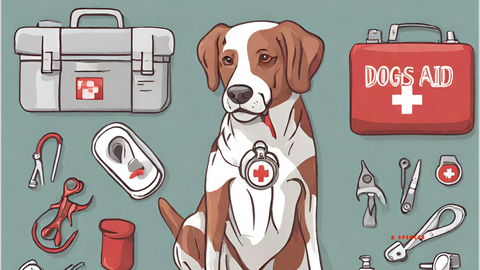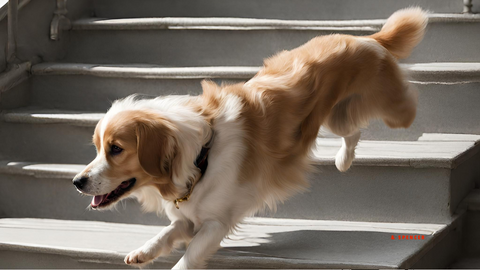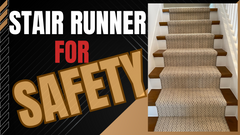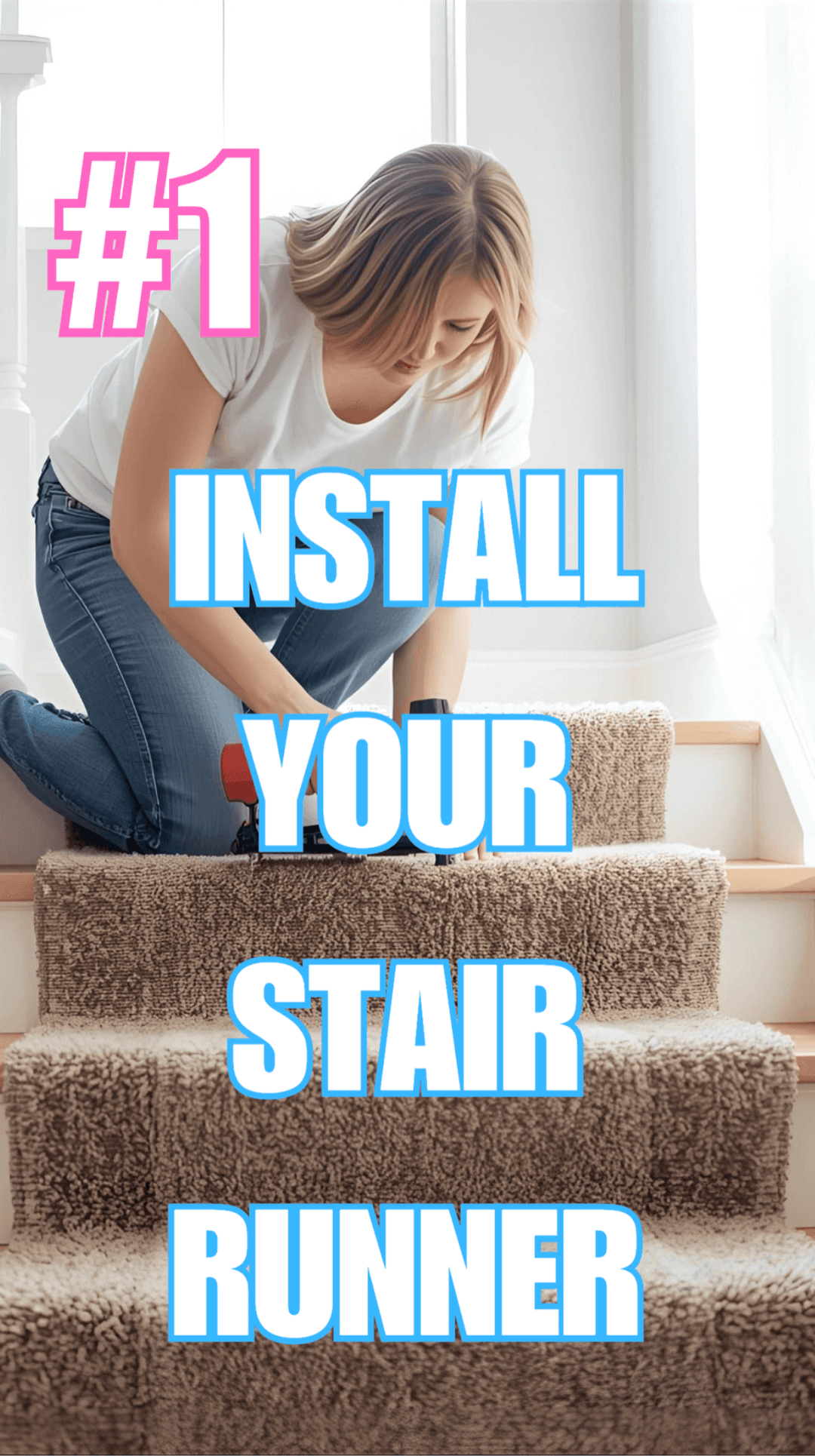Top Solutions for Dogs and Wooden Slippery Stairs

Are your dogs struggling with dogs and wooden slippery stairs? Learn how to prevent slips and build confidence with safe and simple solutions tailored to your furry friend's needs.
Key Takeaways
-
Slippery wooden stairs can pose a danger to dogs, leading to injuries and fear, which can impact their behavior and ability to navigate the stairs safely.
-
There are various solutions to prevent dogs slips on the stairs, including non-slip stair treads, carpeting or stair runners, and ramps or lifts for dogs with mobility issues.
-
If a dog's difficulty with stairs is due to health issues like arthritis or vision problems, identify and treat these conditions, and for behavioral fears, positive reinforcement and gradual exposure training, or professional help may be necessary.
-
Solution? Install a Diy Stair Runner from DirectCarpet.com, they have helped thousands of people and dogs with this simple solution!
Understanding the Dangers of Slippery Wooden Stairs for Dogs
Slippery wood stairs, while beautiful, can be a danger zone for our four-legged friends. A lack of traction on these surfaces can make it easy for a dog to slip and tumble, potentially leading to accidents and injuries.
Imagine the fear an elderly dog might develop after such an experience on wooden stairs. It’s enough to make any dog owner shudder.
This poses a physical risk and can affect a dog’s behavior as well. A dog falling or slipping on stairs may develop a hesitancy or outright fear of stairs. This fear can manifest in several ways, such as the dog becoming overly cautious on stairs or avoiding them altogether. Therefore, finding ways to make wood stairs less slippery is crucial for their safety.
Why Are Wooden Stairs Slippery?
The smooth surfaces of wooden stairs, particularly those made from hardwood, linoleum, or tile, contribute to their inherent slipperiness.
These materials lack the natural traction that can help your dog keep a solid grip while navigating the staircase. But the material isn’t the only culprit. Environmental conditions, such as humidity and the presence of dust, dirt, and wax on the wood surface, can exacerbate the problem.
The risk of slips and falls increases in winter weather when wooden stairs become even more treacherous due to wet conditions, presenting a challenge for your dog to maintain secure footing.
Common Injuries from Slippery Stairs
When a dog slips on a staircase, the consequences can be severe. Dogs may suffer from:
-
muscle strains
-
bruises
-
fractures
-
head trauma
One wrong step can lead to a dog falling, an unexpected vet visit, and a whole lot of stress for both you and your pup, especially when there are many dogs involved.

Sometimes, a fall can result in long-term complications such as joint problems, arthritis, and nerve damage. These issues can exacerbate existing health problems, such as hip issues and neurological concerns.
A dog suffering from these injuries may display symptoms like limping, difficulty breathing, disorientation, or even coughing up blood.
It's why it's so crucial to do all we can to prevent our dogs from falling on stairs.
Preventing Slips and Falls: Top Solutions
Fortunately, there are multiple ways to make stairs less slippery for your dog, ensuring a safer environment for their movements.
For outdoor wood stairs, using non-slip solutions such as rubber or vinyl stair mats, non-slip tread tape, and grit paint can improve safety and traction.
These solutions can help address this common concern and provide peace of mind for pet owners.
From non-slip stair treads to carpets and stair runners, these solutions can significantly reduce the risk of slips and falls, helping your dog navigate the stairs with confidence.
In addition to these methods, using anti-slip products such as anti slip spray, anti slip paint, anti slip paints, anti slip coating, and anti-slip coatings can effectively make wooden stairs less slippery.
These products create a more textured surface and skid-resistant surface, enhancing grip and reducing the risk of slips.
Even simple grooming practices, like trimming your dog’s foot pads, can make a difference for dog owners. Excess fur on foot pads can increase the risk of tripping or slipping on the stairs, especially for dogs with long or fuzzy paws.
Let’s explore how these solutions can enhance your dog’s safety while navigating stairs.
Non-Slip Stair Treads and Anti-Slip Paint

Non-slip stair treads are a simple yet effective solution to make your wooden stairs safer for your dog.
By providing extra grip, these treads help reduce the possibility of slips and falls.
They also protect your stairs from scratches and damage caused by pet nails, ensuring that your lovely staircase remains in top condition.
High-quality stair treads have several benefits:
-
They are made from Olefin carpets with foam backing, which makes them stain-resistant and provides secure footing for your dog.
-
They prevent movement and enhance safety on the stairs.
-
They are easy to maintain, requiring only regular vacuuming and spot cleaning.
These stair treads, featuring non-slip adhesive backing, remain securely in place on the stairs, serving as a practical, easy solution for slippery stairs.
Carpeted Stairs or Stair Runners
Another viable solution to improve grip on your stairs is to add carpeting or stair runners. These can significantly minimize the likelihood of your dog slipping on those tricky wooden stairs.
Better yet, they also add a touch of style and warmth to your staircase.

When choosing materials for your stair runners, consider durable and stain-resistant options like nylon or polyester.
These materials can withstand the wear and tear of your dog's frequent stair use. And with options like the Ottomanson Softy Stair Treads, you get soft, low-pile nylon runners that are easy to clean and come with a non-slip backing for added safety.
Ramps and Lifts
If your dog has mobility issues, installing a ramp or lift could be a game-changer. These alternatives eliminate the risk of slipping on stairs, providing a safe method for your dog to navigate different levels.
This can be particularly beneficial for arthritic dogs, reducing the strain on their joints and making it easier for them to move around.
An expandable ramp or one with a non-slip surface could be worth considering for its flexibility and easy storage.
Pet ramps can be used over short staircases, decreasing pressure on your dog's hips and hind legs while providing a stable pathway. With the right solution, your dog can navigate your home with ease, regardless of their mobility levels.
Helping Your Dog Navigate Slippery Stairs

In addition to implementing the above solutions, guiding your dog as they navigates the stairs is equally crucial.
It’s important to note that while door mat style treads and rubber treads are good options, they are less effective with leather-soled shoes.
There are several ways to do this, from carrying your small dog or using a travel kennel to using a lifting aid or harness for larger dogs or those with mobility issues.
It’s also pivotal to train your dog to navigate stairs safely. You can achieve this with:
-
Boundary training, which teaches your dog when they require assistance with stairs
-
Desensitization training that helps your dog conquer their fear of stairs
-
Positive reinforcement, such as praise and treats, can also encourage your dog to use stairs without fear.
Positive Reinforcement
In dog training, positive reinforcement proves to be a potent tool.
By rewarding your dog for displaying the desired behavior, you encourage them to repeat it. The reward can be a treat, praise, or even a favorite toy.
When it comes to treats, choose something small, soft, and appealing to your dog to keep them motivated.
Ideally, you should reward your dog within seconds of displaying the desired behavior. This helps them associate the reward with the correct action
. As your dog becomes adept at navigating stairs, you can decrease the frequency of the treats but continue to provide consistent praise to reinforce the behavior.
Gradual Exposure
Gradual exposure is another effective method to help your dog adjust to stairs. Start small, encouraging your dog to approach and interact with a single step.
Use treats as a lure and reward to create a positive experience.
As your dog gains confidence with the initial step, gradually increase the challenge by encouraging them to navigate more steps.
Move the treats higher up the staircase to entice them upward.
Remember to keep the rough surface of the stairs free of any objects that could potentially trip or startle your dog during these training sessions, and always end each session on a positive note.
Identifying and Addressing Health Issues Related to Stair Navigation

Sometimes, a dog's difficulty in navigating stairs may be due to underlying health issues.
Symptoms like awkward hopping, stumbling, or leaning against the wall may suggest that your dog has a medical issue affecting their ability to use stairs.
When you notice such signs, it's crucial to seek veterinary advice.
Health issues such as joint problems, arthritis, or injuries can significantly hinder a dog's stair navigation. Let's explore this further.
Joint Problems and Arthritis
Older dogs, especially elderly ones or those belonging to certain breeds, can suffer from joint problems and arthritis, making it difficult and painful for them to navigate stairs. Symptoms such as:
-
Reluctance to rise or use stairs
-
limping
-
stiffness
-
a closed hind leg stance
may indicate joint pain or arthritis.
If your dog shows these symptoms, consider using carpet stair treads or a dog lift or sling to reduce pressure on their hind legs.
These aids provide ways to alleviate the difficulty of stair climbing for dogs with joint problems and can make a significant difference in their comfort and safety.
Vision and Balance Issues
Aging can lead to deterioration in a dog's vision and balance, affecting their safe navigation of stairs.
To assist dogs with vision issues, enhance stair visibility by leaving lights on or applying brightly colored tape on the edges of steps to create visual contrasts.

Ear infections and vestibular disease can also affect a dog's balance and their ability to navigate stairs.
Symptoms like loss of balance or head tilting can be indications of these conditions, warranting a veterinary check-up to ensure your dog gets the necessary care and treatment.
When to Seek Professional Help
Despite your best efforts to assist your dog in navigating slippery stairs, there might be instances when seeking professional help is necessary.
This could be when your dog displays symptoms of a medical issue or when they show intense fear of stairs despite your efforts to help them overcome it.
Let's delve into the specifics of when you should seek professional help for medical concerns and behavioral issues related to stair navigation.
Medical Concerns
A vet check-up may be necessary if your dog shows signs of chronic pain, such as:
-
shaking or trembling, particularly when at rest
-
Changes in daily habits such as reduced sleep, appetite, or water intake
-
vocalizations such as groaning or grunting when lying down
-
difficulty using stairs
These signs may point to pain in dogs and should be addressed by a veterinarian.
Monitoring symptoms like chronic pain or vestibular issues is crucial, as they can substantially impact a dog's ability to safely use stairs.
Behavioral Issues
When your dog's fear of stairs proves too intense to overcome with standard home methods, and your dog is afraid of making any progress,
it could be time to consult a professional dog trainer or behaviorist, especially if your dog falls due to this fear. With their help, your dog can eventually overcome their fear and confidently navigate stairs.
Behavioral changes in a dog's behavior, like increased detachment or aggression, or behaviors such as hiding or avoiding social interaction, might indicate discomfort or fear related to stair use. In such cases, a professional trainer's intervention may be necessary to ensure your dog receives supportive and effective guidance.
Summary
Navigating slippery wooden stairs can be a challenge for our canine companions, but it doesn't have to be. By understanding the dangers, implementing solutions to make stairs safer, helping our dogs navigate stairs, and addressing any potential health issues, we can ensure our furry friends can safely navigate any staircase in the house. Remember, every dog is different, so it's crucial to tailor your approach to your dog's specific needs and abilities.
Frequently Asked Questions
How do I make my wooden stairs less slippery for my dog?
You can make your wooden stairs less slippery for your dog by using adhesive carpet strips, which provide traction and are easy to install. They come in various colors and patterns to match your interior spaces.
Why is my dog slipping on hardwood floors?
Your dog may be slipping on hardwood floors because they can't get traction on the smooth surface, and their toenails can't grip the edge of the floor. This is especially true for dogs with an abnormal gait or weaker muscles.
Should I be worried if my dog fell down the stairs?
It's best to take your dog to the vet as soon as possible, even if there are no immediate life-threatening injuries. The vet can check for internal or unclear issues that may not be immediately apparent.
How can I help my dog navigate slippery stairs?
You can help your dog navigate slippery stairs by using positive reinforcement and gradually exposing them to the stairs. For dogs with mobility issues, consider using a lifting aid or harness for support.
What are the signs of a medical issue affecting my dog's ability to use stairs?
If your dog is showing signs like awkward hopping, stumbling, leaning against the wall, reluctance to use stairs, or limping, it could indicate a medical issue affecting its ability to use stairs. It's important to seek veterinary care for further evaluation.













Leave a comment